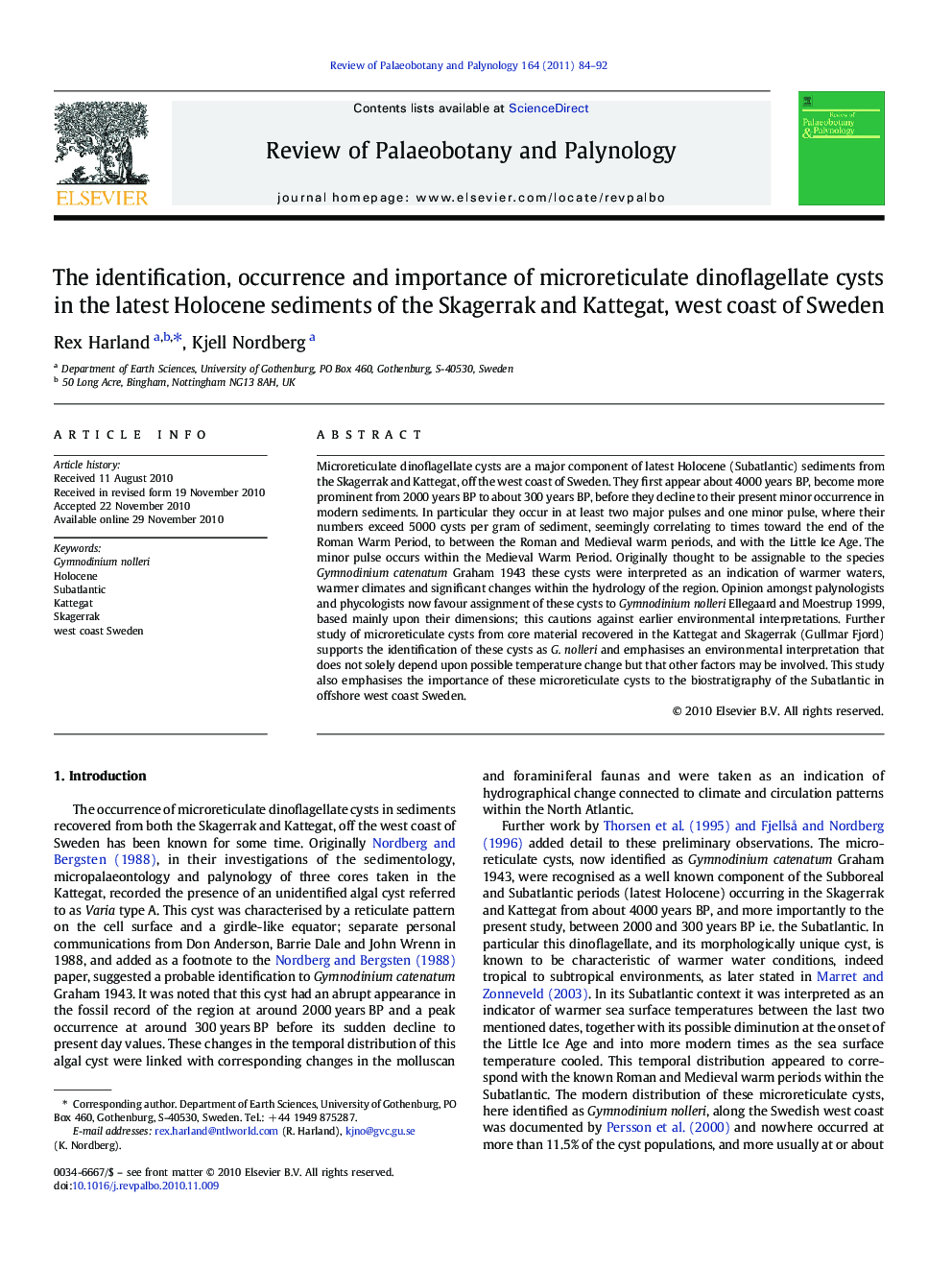| Article ID | Journal | Published Year | Pages | File Type |
|---|---|---|---|---|
| 4750587 | Review of Palaeobotany and Palynology | 2011 | 9 Pages |
Microreticulate dinoflagellate cysts are a major component of latest Holocene (Subatlantic) sediments from the Skagerrak and Kattegat, off the west coast of Sweden. They first appear about 4000 years BP, become more prominent from 2000 years BP to about 300 years BP, before they decline to their present minor occurrence in modern sediments. In particular they occur in at least two major pulses and one minor pulse, where their numbers exceed 5000 cysts per gram of sediment, seemingly correlating to times toward the end of the Roman Warm Period, to between the Roman and Medieval warm periods, and with the Little Ice Age. The minor pulse occurs within the Medieval Warm Period. Originally thought to be assignable to the species Gymnodinium catenatum Graham 1943 these cysts were interpreted as an indication of warmer waters, warmer climates and significant changes within the hydrology of the region. Opinion amongst palynologists and phycologists now favour assignment of these cysts to Gymnodinium nolleri Ellegaard and Moestrup 1999, based mainly upon their dimensions; this cautions against earlier environmental interpretations. Further study of microreticulate cysts from core material recovered in the Kattegat and Skagerrak (Gullmar Fjord) supports the identification of these cysts as G. nolleri and emphasises an environmental interpretation that does not solely depend upon possible temperature change but that other factors may be involved. This study also emphasises the importance of these microreticulate cysts to the biostratigraphy of the Subatlantic in offshore west coast Sweden.
